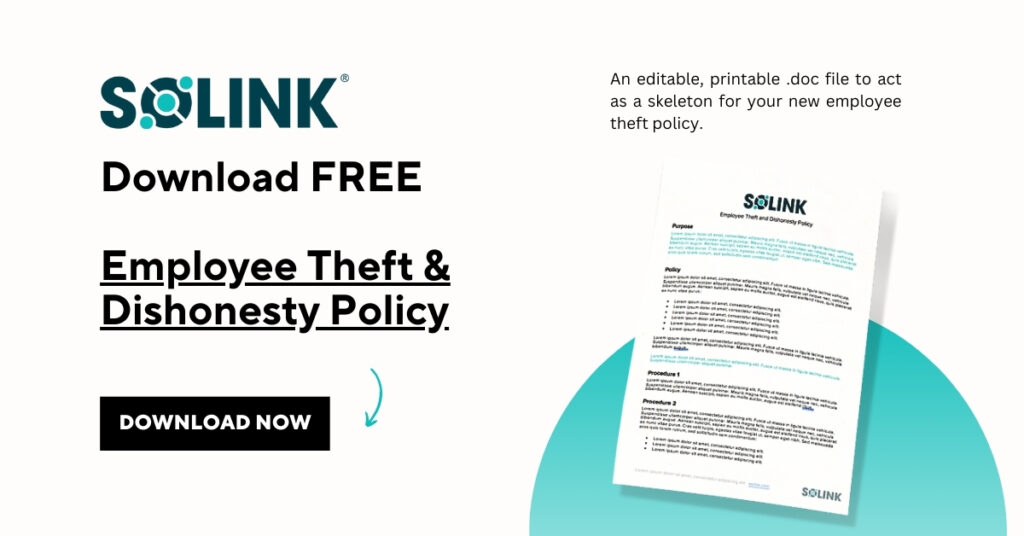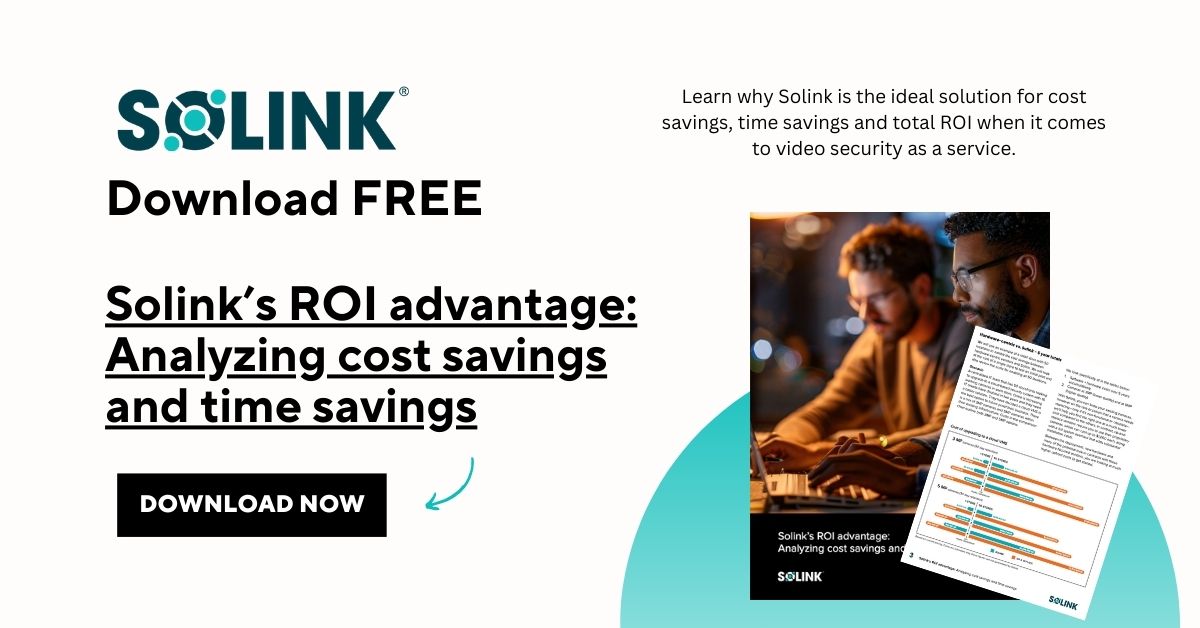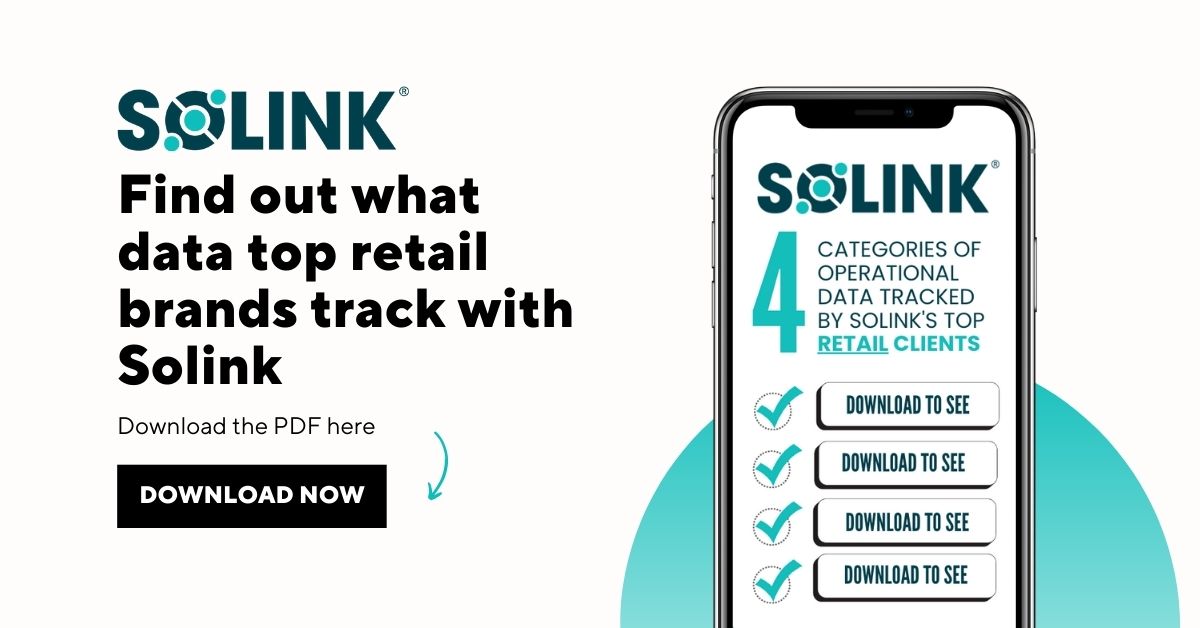Table of Contents
Table of Contents
Navigating the retail landscape can often feel like traversing through a sea of endless acronyms. From ATV to VM, each term carries a unique significance, shaping the way businesses operate and interact with consumers. Understanding these abbreviations is fundamental to decoding the intricate web of retail operations, strategy, and marketing. This retail abbreviations list is your comprehensive guide to 100+ acronyms that every retailer needs to know.
101 retail abbreviations you need to know
Here is our comprehensive retail abbreviation list, with all the acronyms you need to know to understand how retailers speak.
1. Asset Protection (AP)
AP definition: Asset Protection (AP) refers to the proactive initiatives and strategies retailers implement to prevent theft, fraud, and other losses, thereby securing their assets.
2. Automated Retail (AR)
AR definition: Automated Retail (AR) refers to the use of automation and robotics in the retail sector to streamline operations and enhance customer experiences.
3. Average Transaction Value (ATV)
ATV definition: Average Transaction Value (ATV) is the average amount of money spent by customers in a single transaction at a store.
4. Abandoned Cart (AC)
AC definition: Abandoned Cart (AC) refers to a scenario in online shopping where a visitor leaves items in their digital shopping cart but exits without completing the purchase.
5. Anchor Store (AS)
AS definition: Anchor Store (AS) is one of the largest—if not the largest—retail stores in a shopping mall, typically a department store or a major retail chain.
6. Artificial Intelligence (AI)
AI definition: Artificial Intelligence (AI) involves the use of data analytics and machine learning to optimize product assortments in retail, ensuring the right mix of products is available to meet consumer demand.
7. Average sales value (ASV)
Formula: Average transaction value = total sales/number of transactions
Average transaction value is crucial for analyzing and enhancing the value of each customer transaction. It helps retailers understand customer spending habits, optimize product offerings, and devise strategies to increase transaction values.
Along with Multiple sales rate, the average transaction value is often used when calculating the lifetime value of customers. This can improve marketing decisions, including whether to create loyalty tools such as reward cards or point systems.
8. Beacon Technology (BT)
BT definition: Beacon Technology (BT) utilizes Bluetooth devices placed in-store to send marketing messages, discounts, and information to customers’ smartphones as they shop.
9. Brand Loyalty (BL)
BL definition: Brand Loyalty (BL) is the positive association consumers attach to a particular product or brand. Customers that exhibit brand loyalty are devoted to a product or service, which is demonstrated by their repeat purchases despite competitors’ efforts to lure them away.
10. Multiple sales rate (MSR)
Formula: Multiple sales rate = (number of sales with more than one item/total number of sales transactions) x 100
Multiple sales rate is important because it helps boost your total sales revenue and is often attributed to good customer service and activated sales staff helping patrons find more items.
11. Sell through rate (STR)
Formula: Sell through rate = (number of units sold/initial inventory quantity) x 100
The sell through rate is instrumental in assessing the selling efficiency of products. It is essential for inventory management and helps retailers to adjust their inventory levels, reduce holding costs, and identify the right mix of products.
12. Gross margin (GM)
Formula: Gross margin = ((net sales – cost of goods sold)/net sales) x 100
Gross margin represents profitability after accounting for the cost of goods. It is a key metric for guiding pricing strategies and ensuring that the business remains profitable while meeting customer price expectations.
13. Stock turn rate (STR)
Formula: Stock turn rate = cost of goods sold/average inventory value
Stock turn rate evaluates inventory management efficiency. It informs restocking strategies and helps retailers maintain an optimal level of stock, thereby reducing holding costs and avoiding stockouts or overstocks. This in turn helps minimize costs while maximizing sales.
14. Break-even point (BEP)
Formula: Break-even point = fixed costs/(selling price per unit – variable cost per unit)
The break-even point calculates the minimum sales needed to cover costs. It is essential for determining pricing, setting sales targets, and ensuring that the business can operate profitably.
15. Customer retention rate (CRR)
Formula: Customer retention rate = (number of returning customers/number of total customers) x 100
The customer retention rate measures the business’s ability to retain customers. It impacts the development of loyalty programs and customer relations strategies, thereby playing a pivotal role in long-term business success.
16. Customer lifetime value (CLV)
Formula: Customer lifetime value = average purchase value x purchase frequency x customer lifespan
Customer lifetime value estimates the total revenue a company can reasonably expect from a customer. It aids in marketing budget allocation, customer retention strategies, and helps businesses prioritize customer segments for personalized marketing.
17. Inventory shrinkage (IS)
Formula: Inventory shrinkage = ((book inventory – physical inventory)/book inventory) x 100
Inventory shrinkage highlights discrepancies between recorded and actual inventory. It is essential for identifying theft, damages, and errors, thereby enabling effective inventory management and loss prevention.
18. Markup percentage (MP)
Formula: Markup percentage = ((selling price – cost price)/cost price) x 100
Markup percentage determines the selling price set above the actual cost. It is crucial for establishing pricing strategies that optimize profit margins, balance customer affordability, and cover operational costs.
19. Open-to-buy (OTB)
Formula: Open-to-buy = planned sales + planned en of month inventory – beginning of month inventory
Open-to-buy provides insights into the purchasing budget for a specific period. It aids in inventory management and helps prevent overstocks or stockouts, ensuring that retailers can meet customer demand efficiently.
20. Return on Investment (ROI)
Formula: Return on investment = (net profit/cost of investment) x 100
Return on investment assesses the profitability of investments. It guides future investment and financial decisions, helping businesses allocate resources effectively and ensuring that investments align with organizational objectives.
This is often used by retail executives when deciding whether to onboard new tools.
21. Days sales of inventory (DSOI)
Formula: Days sales of inventory = number of days in period/inventory turnover ratio
Days sales of inventory measure the average number of days it takes to sell the entire inventory. It is useful for evaluating inventory efficiency, managing stock levels, and optimizing the supply chain to meet customer demand.
22. Cost of goods sold (CGS)
Formula: Cost of goods sold = beginning inventory + purchases – ending inventory
Cost of goods sold calculates the total cost of goods that were sold during a period. It is essential for determining gross profit, pricing strategies, and ensuring that the business can maintain profitability.
23. Net profit margin (NPM)
Formula: Net profit margin = (net profit/total revenue) x 100
Net profit margin evaluates the company’s profitability. It reveals the percentage of revenue that remains as net profit after all expenses, providing a clear view of the financial health of the business.
24. Operating expense ratio (OER)
Formula: Operating expense ratio = (operating expenses/net sales) x 100
Operating expense ratio determines the proportion of a company’s net sales that go towards operating expenses. It assists in budgeting, financial planning, and helps businesses optimize operations for profitability.
25. Economic order quantity (EOQ)
Formula: Economic order quantity = sqrt((2 x demand x ordering cost)/holding cost)
Economic order quantity calculates the optimal order quantity that minimizes total inventory costs. It balances ordering and holding costs to enhance inventory management, ensuring cost efficiency and availability of products.
26. Cash Back (CB)
CB definition: Cash Back (CB) refers to a credit card benefit that refunds the cardholder’s account a small percentage of the sum spent on each purchase.
27. Closeout (CO)
CO definition: Closeout (CO) is the final sale of an item either by a retailer or sell off of a retailer inventory to a 3rd party company.
28. Cross-Merchandising (CM)
CM definition: Cross-Merchandising (CM) is a retail strategy that uses direct and ancillary products to promote each other and maximize sales.
29. Customer Acquisition Cost (CAC)
CAC definition: Customer Acquisition Cost (CAC) is the cost associated with acquiring a new customer. In other words, CAC refers to the resources and costs incurred to turn a lead into a customer.
30. Direct to Consumer (DTC)
DTC definition: Direct to Consumer (DTC) refers to selling products directly to consumers, bypassing any third-party retailers, wholesalers, or any other middlemen.
31. Dynamic Pricing (DP)
DP definition: Dynamic Pricing (DP) is a pricing strategy in which businesses set flexible prices for products or services based on current market demands.
32. Deep Discounting (DD)
DD definition: Deep Discounting (DD) refers to the practice of selling products at a steep discount, or significantly below the original price, to attract more customers.
33. Dropshipping (DS)
DS definition: Dropshipping (DS) is a retail fulfillment method where a store doesn’t keep the products it sells in stock. Instead, when you sell a product, you purchase the item from a third party and have it shipped directly to the customer.
34. Electronic Shelf Label (ESL)
ESL definition: Electronic Shelf Label (ESL) are digital labels used by retailers for displaying product pricing on shelves. The product pricing displayed on an ESL is automatically updated whenever a price is adjusted from a central control server.
35. Endless Aisle (EA)
EA definition: Endless Aisle (EA) is a feature of omnichannel retail where customers can access and purchase products that are not available in physical stores.
36. Flash Site (FS)
FS definition: Flash Site (FS) is a website that features a sale of a specific designer or brand for a set period, usually 24-72 hours.
37. Foot Traffic (FT)
FT definition: Foot Traffic (FT) refers to the number of people passing through a certain space in a given period of time.
38. Frictionless Commerce (FC)
FC definition: Frictionless Commerce (FC) refers to the minimization of barriers in the buying process, thereby making it as easy as possible for customers to make a purchase.
39. Flash Sales (FS)
FS definition: Flash Sales (FS) are sales promotions in which a seller reduces prices on a small selection of items for a short period of time. Flash sales are designed to create urgency, increase customer impulse buying, and drive quick inventory turnover.
40. Frequent Shopper Program (FSP)
FSP definition: Frequent Shopper Program (FSP) is a marketing strategy used by retailers to incentivize repeat business by rewarding customers who shop frequently and spend larger amounts.
41. Gross Margin Return on Inventory Investment (GMROII)
GMROII definition: Gross Margin Return on Inventory Investment (GMROII) is a ratio that a retailer can use to analyze their inventory investment. It is calculated by dividing the gross margin by the average inventory cost.
42. Geo-Fencing (GF)
GF definition: Geo-Fencing (GF) is a feature in a software program that uses the global positioning system (GPS) or radio frequency identification (RFID) to define geographical boundaries.
43. Gift with Purchase (GWP)
GWP definition: Gift with Purchase (GWP) is a sales tactic where the customer receives something additional when a purchase is made.
44. High-Low Pricing (HLP)
HLP definition: High-Low Pricing (HLP) is a type of pricing strategy adopted by companies, where a firm charges a high price for an item and later sells it to customers by giving discounts or through clearance sales.
45. High Velocity Retail (HVR)
HVR definition: High Velocity Retail (HVR) is a term used to describe the modern retail environment which is fast-paced, continually evolving, and highly competitive.
46. Impulse Purchase (IP)
IP definition: Impulse Purchase (IP) refers to any purchase which a shopper makes unplanned, typically as a result of emotions, mood, and feelings.
47. Inventory Turnover (IT)
IT definition: Inventory Turnover (IT) is a ratio showing how many times a company has sold and replaced inventory during a given period.
48. Just in Time (JIT)
JIT definition: Just in Time (JIT) is an inventory strategy companies employ to increase efficiency and decrease waste by receiving goods only as they are needed in the production process, thereby reducing inventory costs.
49. Keystone Pricing (KP)
KP definition: Keystone Pricing (KP) is a form of retail pricing where the retailer doubles the wholesale price (or cost) to determine the retail selling price of a product.
50. Last Mile Delivery (LMD)
LMD definition: Last Mile Delivery (LMD) describes the final step of the delivery process from a distribution center or facility to the end-user. The goal of LMD is to deliver items to the customer as quickly as possible.
51. Loss Prevention (LP)
LP definition: Loss Prevention (LP) refers to the measures used by retailers to prevent theft, damage, or other loss of merchandise, thereby protecting profits.
52. Loss Leader Strategy (LLS)
LLS definition: Loss Leader Strategy (LLS) is a pricing strategy where a product is sold at a price below its market cost to stimulate other sales of more profitable goods or services.
53. Multichannel Retailing (MR)
MR definition: Multichannel Retailing (MR) is a marketing strategy that offers consumers various ways to purchase products, both in physical stores and online.
54. Mobile Commerce (M-Commerce)
M-Commerce definition: Mobile Commerce (M-Commerce) is the buying and selling of goods and services through wireless handheld devices such as cellular telephone and personal digital assistants (PDAs).
55. Mystery Shopping (MS)
MS definition: Mystery Shopping (MS) is a method used by marketing research companies and organizations that wish to measure quality of sales and service, job performance, regulatory compliance, or to gather specific information about a market or competitors.
56. Markdown Money (MDM)
MDM definition: Markdown Money (MDM) is a term used in retail to describe the practice where a manufacturer or supplier compensates a retailer for reducing the selling price of a product to increase its sell-through rate.
57. Net Promoter Score (NPS)
NPS definition: Net Promoter Score (NPS) is a management tool that can be used to gauge the loyalty of a firm’s customer relationships. It serves as an alternative to traditional customer satisfaction research.
58. Network Video Recorder (NVR)
NVR definition: A Network Video Recorder (NVR) is a software program that records video in a digital format to a disk drive, flash drive, memory card, or other mass storage device. Unlike DVRs, NVRs are used with IP cameras and are often used in retail for advanced video monitoring and security.
59. Omnichannel Experience (OE)
OE definition: Omnichannel Experience (OE) refers to creating a seamless customer experience across various channels, both online and offline, to ensure that the customer can switch between channels seamlessly.
60. Omnichannel Retailing (OR)
OR definition: Omnichannel Retailing (OR) is a retailing strategy that uses a variety of channels in a customer’s shopping experience including mobile apps, websites, and physical stores.
61. Open To Buy (OTB)
OTB definition: Open To Buy (OTB) is the merchandise budgeted for purchase by a retail store during a certain time period that has not yet been ordered.
62. Out of Stock (OOS)
OOS definition: Out of Stock (OOS) refers to a situation in which an item is temporarily unavailable for sale. It refers to the stockout situation in a store.
63. Omnichannel Retailing (OR)
OR definition: Omnichannel Retailing (OR) refers to the seamless and continuous shopping experience a customer can have across multiple sales channels (online, in a physical store, or by phone).
64. Organized Retail Crime (ORC)
ORC definition: Organized Retail Crime (ORC) refers to the coordinated theft and fraudulent activities conducted by professional crime rings targeting retail stores. These groups operate to steal merchandise, data, or money from retailers, often reselling stolen goods through various channels. ORC poses significant financial and safety risks to retailers, necessitating advanced security measures and collaboration with law enforcement to address and prevent such activities.
65. Organized Retail Theft (ORT)
ORT definition: Organized Retail Theft (ORT) is a severe form of theft characterized by the coordinated effort of several individuals entering a retail establishment simultaneously to steal high-value items.
67. Power over Ethernet (PoE)
PoE definition: Power over Ethernet (PoE) is a technology that allows network cables to carry electrical power. In retail, PoE is used to supply power to devices like IP cameras, network switches, and other devices in a networked environment, reducing the need for separate power supplies.
68. Pop-Up Retail (PUR)
PUR definition: Pop-Up Retail (PUR) is a trend of opening short-term sales spaces in the United States and the United Kingdom. The Pop-Up Retail concept is applied by some e-commerce companies to open temporary physical stores to advertise their products.
69. Point of Sale (POS)
POS definition: Point of Sale (POS) is the place where a retail transaction is completed. It is the point at which a customer makes a payment to the merchant in exchange for goods or after provision of a service.
70. Price Elasticity of Demand (PED)
PED definition: Price Elasticity of Demand (PED) is a measure used in economics to show the responsiveness of the quantity demanded of a good to a change in its price.
71. Price Matching (PM)
PM definition: Price Matching (PM) is a strategy where a retailer promises a consumer to match lower prices offered by competitors on identical items.
72. Private Label (PL)
PL definition: Private Label (PL) products or services, also known as phantom brands, are those manufactured or provided by one company for sale under another company’s brand.
73. Quick Response Code (QR Code)
QR Code definition: Quick Response Code (QR Code) is a type of matrix barcode first designed in 1994 for the automotive industry in Japan. A barcode is a machine-readable optical label that contains information about the item to which it is attached.
74. Radio Frequency Identification (RFID)
RFID definition: Radio Frequency Identification (RFID) uses electromagnetic fields to automatically identify and track tags attached to objects. The tags contain electronically stored information.
75. Retail Apocalypse (RA)
RA definition: Retail Apocalypse (RA) refers to the closing of a large number of North American brick-and-mortar retail stores, especially those of large chains, starting around 2010 and continuing onward.
76. Retailtainment (RT)
RT definition: Retailtainment (RT) is a term used to describe the addition of amusement or entertainment to the retail mix to attract customers, encouraging them to spend more time in a store and to return.
77. Return on Investment (ROI)
ROI definition: Return on Investment (ROI) is a performance measure used to evaluate the efficiency of an investment or to compare the efficiency of a number of different investments.
78. Retail Footprint (RF)
RF definition: Retail Footprint (RF) refers to the physical presence of a retail store in a market or geographical area.
79. Sales-Reducing Activity (SRA)
SRA definition: Sales-Reducing Activity (SRA) refers to any action or activity within a retail environment that negatively impacts the potential sales, such as stockouts, poor customer service, or inefficient store layouts.
80. Sales-Reducing Transaction (SRT)
SRT definition: Sales-Reducing Transaction (SRT) refers to a transaction that, due to various reasons like returns, refunds, or complaints, results in a reduction of the total sales of the store.
81. Same Store Sales (SSS)
SSS definition: Same Store Sales (SSS) are a business’s sales revenue in the current period, compared to its sales revenue in a past period, from the same store or outlet.
82. Shopper Marketing (SM)
SM definition: Shopper Marketing (SM) is a discipline designed to drive growth by improving the shopping experience for the shopper.
83. Social Commerce (SC)
SC definition: Social Commerce (SC) is a subset of electronic commerce that involves social media, online media that supports social interaction, and user contributions to assist online buying and selling of products and services.
84. Stock Keeping Unit (SKU)
SKU definition: Stock Keeping Unit (SKU) is a scannable bar code, most often seen printed on product labels in a retail store. The label allows vendors to automatically track the movement of inventory.
85. Store Front (SF)
SF definition: Store Front (SF) refers to the facade or entryway of a retail store located on the ground floor or street level of a commercial building, typically including one or more display windows.
86. Scan-Based Trading (SBT)
SBT definition: Scan-Based Trading (SBT) is a form of trading in which the buyer pays for goods only after they have been sold.
87. Shelf Talker (ST)
ST definition: Shelf Talker (ST) is a sign attached to a store shelf that provides product details or promotional information to shoppers.
88. Shopping Cart Abandonment (SCA)
SCA definition: Shopping Cart Abandonment (SCA) is when an online shopper adds items to the virtual shopping cart but leaves the site without completing the purchase.
89. Showrooming (SR)
SR definition: Showrooming (SR) is when a shopper visits a store to check out a product but then purchases the product online.
90. Store Traffic (ST)
ST definition: Store Traffic (ST) refers to the number of people who walk into a retail store. Store traffic is a key metric for retailers, as higher traffic can lead to more sales.
91. Video Management System (VMS)
VMS definition: Video Management System (VMS) is a component of security camera systems that collect, store, and manage the digital video feed from cameras, enabling monitoring, analysis, and response to security events.
92. Visual Merchandising (VM)
VM definition: Visual Merchandising (VM) is the practice in the retail industry of optimizing the presentation of products and services to better highlight their features and benefits.
93. Voice Commerce (VC)
VC definition: Voice Commerce (VC) refers to any transaction with a business that occurs via voice recognition technology, such as ordering a pizza by speaking to a voice-enabled application.
94. Value-Based Pricing (VBP)
VMS definition: Video Management System (VMS) is a component of security camera systems that collect, store, and manage the digital video feed from cameras, enabling monitoring, analysis, and response to security events.
95. Visual Merchandising (VM)
VM definition: Visual Merchandising (VM) is the practice in the retail industry of optimizing the presentation of products and services to better highlight their features and benefits.
96. Video Surveillance as a Service (VSaaS)
VSaaS definition: Video Surveillance as a Service (VSaaS) is a cloud-based video security solution. VSaaS solutions are hosted off-site, typically by a third-party service provider, and offer monitoring services and video management for retailers without the need for maintaining large-scale hardware infrastructures.
97. Video Monitoring as a Service (VMaaS)
VMaaS definition: Video Monitoring as a Service (VMaaS) is a subscription-based service that provides businesses with real-time video monitoring from remote locations by security experts. It allows retailers to outsource the task of monitoring CCTV footage, which can enhance the detection of suspicious activity and improve overall security.
98. Wholesale Price Index (WPI)
WPI definition: Wholesale Price Index (WPI) measures the changes in prices of goods sold and traded in bulk by wholesale businesses to other businesses.
99. Window Shopping (WS)
WS definition: Window Shopping (WS) refers to the activity of looking at goods displayed in retail shop windows without intending to buy them.
100. Zero Inventory (ZI)
ZI definition: Zero Inventory (ZI) is an inventory management model that aims at reducing the inventory holding by a company to virtually zero.
101. Zone Pricing (ZP)
ZP definition: Zone Pricing (ZP) is a pricing strategy in which the price of a product is based on the cost to deliver to different geographical locations, or “zones.”
Solink can help shine light on your retail business
This extensive retail abbreviations list serves as a crucial resource for anyone in the retail sector. Understanding and utilizing these terms is essential for navigating the complexities of the industry, enhancing communication, and fostering a deeper knowledge of retail operations and strategies. With this guide, you are well-equipped to tackle the challenges and seize the opportunities that the dynamic world of retail presents.
To see how Solink helps you face the challenges of the retail industry, sign up for a demo today.




